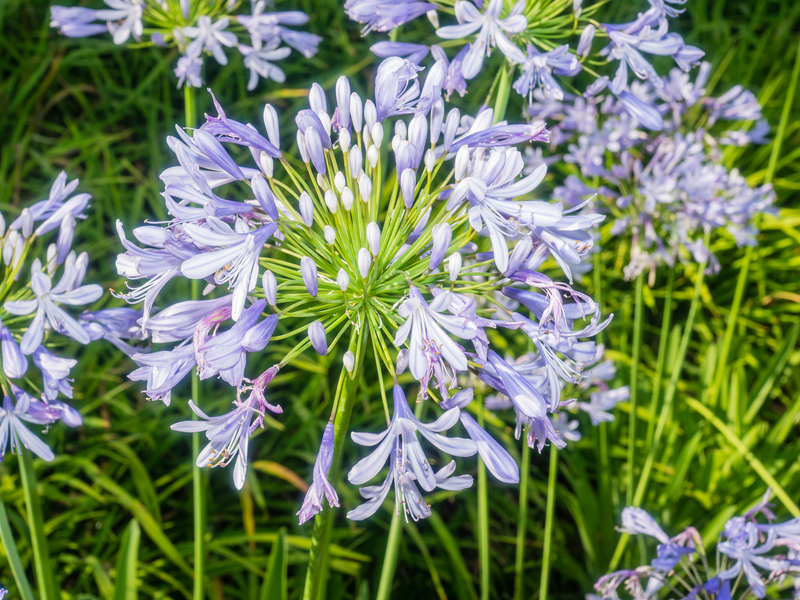Rethink Weed Management with These 3 Critical Tips
Posted on 20/06/2025
Rethink Weed Management with These 3 Critical Tips
Weed management has always been a central challenge for gardeners, farmers, and landscapers alike. With evolving environmental regulations, resistance issues, and sustainability concerns, it's crucial to adopt new approaches. If you're looking to enhance your strategy and improve yields while protecting the environment, it's time to rethink weed management. In this comprehensive guide, discover three critical weed control tips that will change your approach and help you cultivate healthier, more robust plants. Read on for expert insights, practical strategies, and sustainable solutions to keep your fields and gardens weed-free.
Table of Contents
- Understanding Modern Weed Challenges
- Critical Tip 1: Embrace Integrated Weed Management
- Critical Tip 2: Boost Soil Health to Outcompete Weeds
- Critical Tip 3: Smart Weed Prevention Methods
- Bonus Tips: Rethinking Herbicide Use
- Frequently Asked Questions About Weed Control
- Conclusion: Future-Proof Your Weed Management Strategy
Understanding Modern Weed Challenges
Weed management strategies have come a long way from manual weeding and blanket herbicide spraying. Today's weed problems are more complex, involving herbicide-resistant species, invasive plant threats, and the need to protect beneficial insects and microbes. Understanding the modern context is the first step toward effective weed control.
The High Costs of Poor Weed Control
- Crop competition: Weeds steal nutrients, sunlight, and water from crops.
- Yield loss: Poorly managed weeds can reduce yields by up to 30% or more.
- Increased production costs: Over-reliance on herbicides leads to resistance and higher input costs.
- Soil health damage: Some chemical interventions can disrupt soil biology and structure.
By rethinking weed management, you can tackle these challenges comprehensively and sustainably.
Critical Tip 1: Embrace Integrated Weed Management
Integrated Weed Management (IWM) combines multiple methods to keep weed populations below damaging thresholds rather than aiming for total eradication. This holistic strategy integrates cultural, mechanical, biological, and chemical approaches in a way that's both effective and environmentally sound. It's the cornerstone of modern weed control solutions.
Key Components of IWM
- Cultural Controls:
- Crop rotation: Alter crop species to break weed cycles.
- Dense planting: Shade out weeds and reduce available sunlight.
- Cover crops: Smother weeds and enrich soil health.
- Mechanical Controls:
- Tillage: Disrupt and bury weed seeds (use with caution to prevent soil erosion).
- Hoeing and cultivation: Remove weeds before they mature and set seed.
- Mulching: Suppress weed germination using organic or synthetic barriers.
- Biological Controls:
- Grazing animals: Goats or sheep can help control certain weed species.
- Beneficial insects: Encourage insects that feed on target weed seedlings.
- Chemical Controls:
- Targeted herbicide applications: Rotate herbicides from different groups to prevent resistance.
- Spot treatment: Apply herbicides only where needed to minimize impact on non-target species.
By mixing these approaches, you reduce reliance on any single tactic--lowering the risk of resistance and improving long-term outcomes.
Benefits of Integrated Weed Management
- Slower resistance development
- Improved sustainability and reduced environmental harm
- Cost-effectiveness over the long term
- Greater flexibility in response to changing weed populations
Adopting IWM is the smartest way to rethink weed management for lasting results.
Critical Tip 2: Boost Soil Health to Outcompete Weeds
One of the most overlooked weed control strategies is promoting soil health. Healthier soils grow stronger crops that can better compete with weeds and reduce the overall weed pressure naturally. Enhancing soil organic matter, structure, and biology benefits your plants--and makes life difficult for pesky weeds.
How Soil Health Suppresses Weeds
- Crowded root zones: Robust crops hog water and nutrients, leaving weeds with less to survive.
- Disease suppression: Microbial diversity reduces disease incidence, indirectly lowering weed establishment.
- Better moisture retention: Mulched or cover-cropped soils dry out less, discouraging some weed species.
Soil Improvement Tactics
- Increase Organic Matter:
- Compost application feeds beneficial microbes and loosens soil.
- Green manures and cover crops boost carbon and suppress weeds when cut and left on the soil.
- Reduce Bare Soil:
- Keep soil covered year-round with plants or mulch to prevent weed seeds from germinating.
- Rotate Crops and Fields:
- Rotate annuals and perennials to break weed cycles and disrupt pest habitats.
- Use Mulches Effectively:
- Organic mulches (like straw or wood chips) or landscape fabric can choke out weeds and feed soil life as they decompose.
Building healthier soil is a long-term investment that pays off in crop resilience and reduced weed problems. Soil is your first line of defense in sustainable weed management strategies.
Organic Farming and Soil Health
If you practice organic weed management, soil improvement is even more vital, as you'll rely less on chemical interventions. Use compost teas, biochar, and regular soil testing to optimize your soil's health and give crops the edge over competing weeds.
Critical Tip 3: Smart Weed Prevention Methods
Prevention is always easier than cure. By adopting smart, proactive weed prevention strategies, you can reduce the need for labor-intensive removal or chemical controls later in the season.
Top Prevention Practices to Rethink Weed Management
- Seed Bank Management: Most weed problems come from seeds already present in the soil. Don't let existing weeds go to seed--remove them early and often.
- Proper Sanitation: Clean tools, boots, and machinery to avoid transporting weed seeds between fields and garden beds.
- Edge Maintenance: Manage weedy borders, fencelines, and ditches so they do not serve as seed sources for your main growing areas.
- Pre-emergent Strategies: Apply certified organic or conventional pre-emergent herbicides or mulches to prevent seed germination.
- Dense Planting: Use close crop spacing and fast-growing varieties to outcompete weeds for sun and resources.
- Timely Interventions: Scout fields regularly for early-season weed flushes and treat or remove weeds before they mature.
Prevention is your best investment in effective weed management, slashing time and costs long-term while maintaining higher yields and healthier soil.
Weed Identification and Monitoring
Learning to identify different weed types is essential. Some may require specific control measures, while others can be tolerated or easily removed by hand. Utilize smartphone apps or regional weed guides to help distinguish between annuals, perennials, and noxious species. Monitor your land frequently--catching weeds early makes a world of difference.
Bonus Tips: Rethinking Herbicide Use
No article on rethinking weed management would be complete without addressing herbicide use. While chemical weed control is often necessary in large-scale farming or severe infestations, their use must be thoughtful and strategic in today's environment.
Responsible Herbicide Practices
- Rotate different herbicide groups each season to slow the development of resistant weed populations.
- Use spot-spraying or wicking methods rather than whole-field applications.
- Always follow label instructions, waiting periods, and consider buffer zones to protect waterways and pollinators.
- Integrate herbicide use with non-chemical tactics like mulching, crop rotation, and manual removal for sustainable results.
Remember: The most effective weed management plan is always diversified, relying on multiple methods--not just herbicides.
Frequently Asked Questions About Weed Control
What are the most effective natural weed management strategies?
Natural weed management techniques include mulching, cover cropping, crop rotation, manual hand-pulling, hoeing, and encouraging dense crop canopies. Diverse tactics are key to suppressing weed growth without chemicals.
How can I prevent weeds in my vegetable garden?
Use thick organic mulches, plant crops closely, rotate crops each year, and promptly remove young weeds before they set seed. Consider using drip irrigation or soaker hoses to restrict water to your plants--not open soil where weeds could thrive.
Why should I avoid over-using herbicides for weed control?
Excessive herbicide use can lead to resistance, environmental pollution, and harm to beneficial organisms in the soil and surrounding habitats. A balanced approach combining cultural, mechanical, and biological controls is more sustainable long-term.
Conclusion: Future-Proof Your Weed Management Strategy
Effective weed management isn't a one-time event--it's an ongoing process requiring a mix of prevention, cultural practices, and smart interventions. By embracing Integrated Weed Management, investing in soil health, and prioritizing prevention, you can outsmart weeds year after year--while saving time, money, and reducing your environmental footprint.
- Embrace diversity: Mix strategies for the best long-term weed suppression.
- Focus on soil health: Healthy soils grow competitive crops and fewer weeds.
- Prevention beats cure: Stop weed problems before they start with regular monitoring and good practices.
Are you ready to rethink your weed management plan? Implement these three critical tips on your farm, garden, or landscape, and see the difference in health, yield, and sustainability. For more information about modern weed control solutions, subscribe to our newsletter and stay ahead of the weeds!



